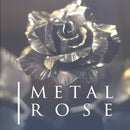Introduction: Metal Etching - How to Make a Man's Visiting Card
Making a visiting card.
If we don’t go into details and speak in an easy way etching is transfer of images from paper to metal.
Etching is:
-chemical
-electrolysis
In this article I’ll tell you about electrolysis as more interesting faster and safer method of etching.
Making everything with your hands and using materials at hand by the example of the unique visiting card.
We shall need:
-municipal water
-sodium chloride
-power source*
-a container
-a workpiece
-an iron
-a laser printer
-glossy paper**
*-in the quality of the power source we can use a regular battery charger of cell phones. Using a low-powered charger etching will happen but we’ll need more time for it. And it’s better than you’ll use a powerful charger with current that could break through the protection cover of the printed picture and burn through all workpiece in just a few minutes (or even seconds if you use a car battery)
**-glossy paper is covered with such compositions that prevent from soaking toner into paper, it improves transfer of the picture. Also you can do it without any paper if you draw a picture in metal by hands. If you, for example, have good artistic skill. For clarity, I divided the article into small parts.
Step 1: Picture
You can download it from the Internet or draw yourself in Photoshop. The main thing is to make the lines clean and sole-colored (those places with translucent toner will be etched with the general part of etching and we’ll have fails!)
We need to have 2 aspects in mind:
-etching cuts into the unprotected part of a metal surface
-you should print a mirror image as you’ll put the right side on metal
Step 2: Image Transfering
The second part:
I use an iron as it’s the easiest and most accessible variant of heating. You can see in the video that I turned over the iron and put the workpiece on it using a piece of cloth. From my experience I understood that we could get more qualitative transference flattening the picture out manually but not trying to iron it out. After that we’re going to water procedure. Under water stream (or in a container with water) soaking the workpeice and cleaning the paper using our fingers accurately. Toner will be on metal!
Step 3: The Etching Solution
It’s easy! For electrolysis etching we shall need rich salt liquid. It means that we have to add salt in water until it stops melting. We need it for increasing conductivity of water. It’s not necessary to count salt and strew the same quantity blindly for every experiment. Remember, salt melts more in hot water than in cold one.
Step 4: Preparation
Setting both electrodes (cathode (minus) – container, anode (plus) – detail) in the salt solution opposite one another. I do it vertically to prevent from flocking sediment on the workpiece. The electrodes mustn’t touch each other. It’s important! Cathode should be the same size as the detail. It’s necessary for equal etching.
Step 5: Etching
My battery charger lets me regulate current and it’s quite convenient for controlling the process but not critical. I set 0.5A current it’s the same as a regular phone charger gives (it’s the stuff which I used at the beginning of my experiments) Tension isn’t so important in this case. It has an influence on a distance between the electrodes. We have a small distance that’s why I said it was important.
The biggest surface which will be etched the highest current we need. Non-ferrous metals also need more current. Using my etching method I got the result after 30min with 0.5A current. With such a current the toner was without any damage and etching was deep enough and without any fails! Then I just cut the workpiece out with scissors and polished with sand paper. The full process is in the video. If you have any question I’ll be glad to answer all of them! Pleasant viewing!











